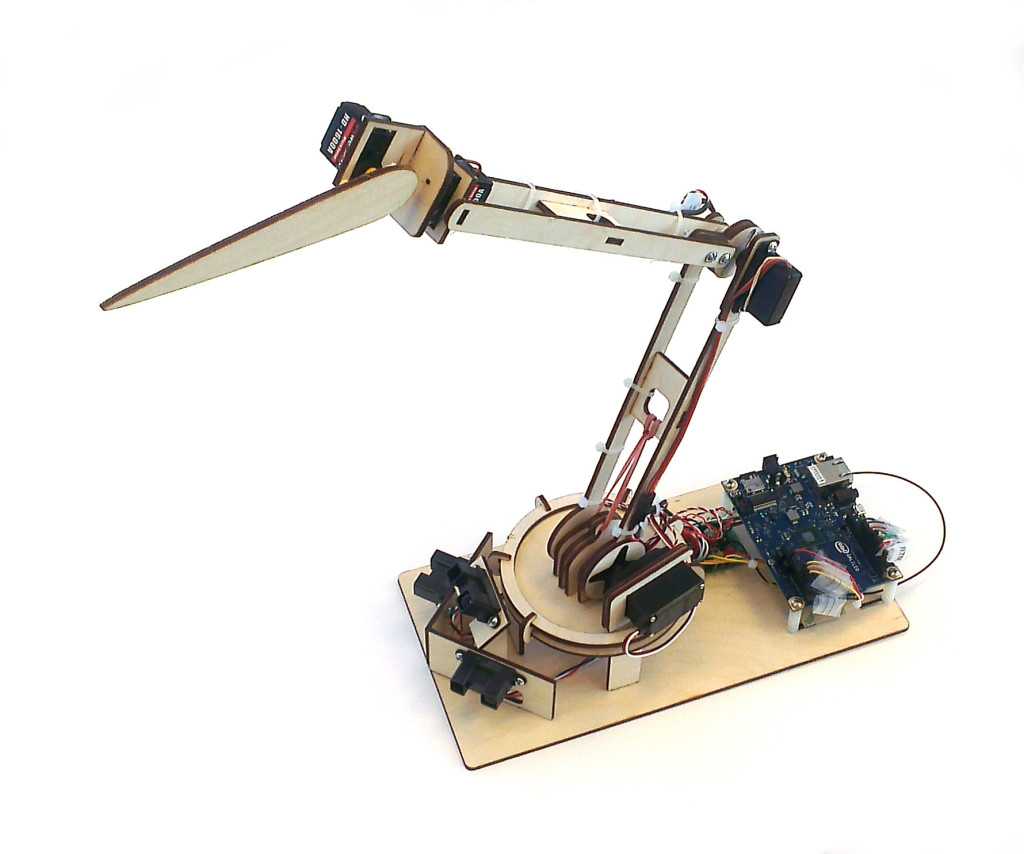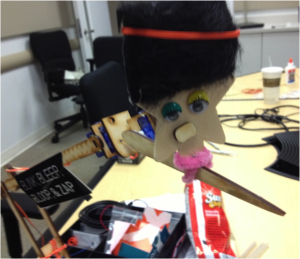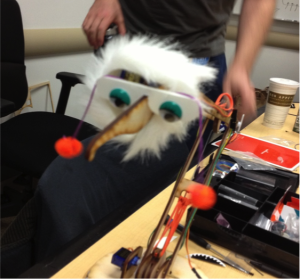
At Intel Labs, I worked on a project that positioned data from mobile sensors and web APIs as the raw material for playful experience. I aimed to empower users through simple tools for experimentation, invention, and self-expression. As part of this research, I prototyped an evocative “Data Monster” which looked something like a cross between a robotic arm and a bird. The Data Monster responds to humans in proximity and moves a bit like a chicken or like a snake as it greets those nearby. But the way it reacts is actually determine by its “mood,” a variable which is, in turn, modulated by the ebb and flow of particular keywords in twitter. Here are some early prototype sketches along with the first Data Monster I ever built.

I imagined these sorts of evocative objects as serving somewhat like pets or houseplants in that they provide ambient clues to fluctuations in the environment. In this case, however the “environment” doesn’t have to be local; it can include all sorts of data-streams from web APIs and sensors throughout the world. I started thinking about these sorts of interactive objects in terms of what I call “representational animism.” The “data monster” prototype served as an example of a design theme I call ‘representational animism,’ in which evocative objects serve as data-visualizations by interacting with the world around them in particular ways. I mean “animism” in the sense of leveraging people’s ability to ascribe intentionality and inner life to objects, and I use “representational” to convey the ways that data from “somewhere else” can be translated as a kind of behavioral modulation (rather than as a direct one-to-one mapping between signal and output). Representational animism diverges significantly from traditional data-visualization, with its emphasis on transparency, by instead favoring exploration, play, and discovery. I’ve published on animistic design with collaborator Phil van Allen.
Further development of this project is currently being pursued within Intel Labs as a demonstration of the range of access points at which developers and designers can also be given access to a “play” with a creative platform. Lucas Ainsworth at Intel Labs went on to refine and adapt the Data Monster prototype to work with Intel’s Galileo board (and I’ve included that later iteration is the main image above). He created a whole toolkit that enables anyone to built a Data Monster. Here are some images of Data Monsters we created in a workshop at Intel Labs. And check out Lucas’s awesome prototype in action here.

